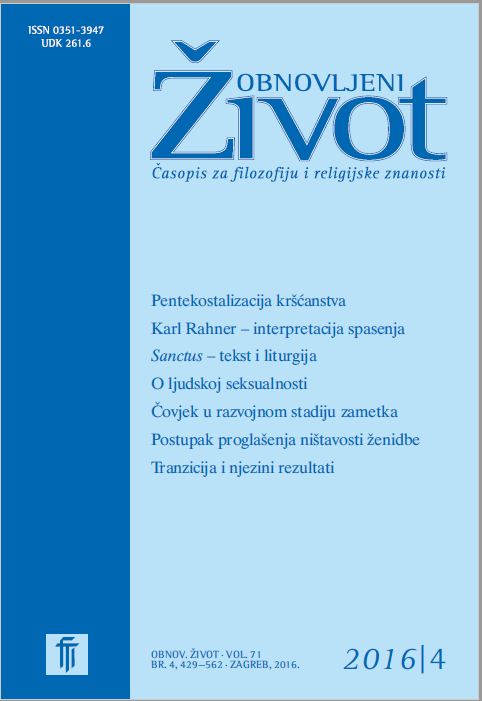Reform of the Canonical Process for the Declaration of the Nullity of Marriage
Changes to the Ordinary Process
Keywords:
nullity of marriage, ordinary procedure, authority of the court, diocesan and inter–diocesan tribunals, collegiate tribunal, sole judge, executive decisionAbstract
After a full year since it has taken effect on December 8, 2015 the reform of the canonical process is still the focus of attention primarily of the faithful who have a particular interest in examining the validity of the marriage relationship, but also the staff of ecclesiastical courts whose task it is to apply the provisions of the two Apostolic Letters motu proprio Mitis Iudex Dominus Iesus and Mitis et Misericors Iesus. This article strives to provide an overview of the important novelties, but only in regard to the ordinary process for declaring an annulment which has existed until now and which is almost always used in judicial practice. Aside from this procedure, there are also two additional ones: a briefer process involving the Bishop and the process based on decree which are not the subject of this paper. When we focus our attention upon the initial premises of the introductory section which provided the guidelines for the entire reform, the changes resulting when new provisions are applied become understandable. In the subsequent sections of the paper, the canonical regulatory rules themselves of the reform are presented under various headings. First of all, the criteria are put forward for determining the authority of the court and likewise the changes pertaining to the structure of the courts as well as the staff of the ecclesiastical courts. These are followed by novelties in regard to initiating annulment proceedings and complying with various deadlines upon the commencement of the procedure. The final section of the paper discusses the topic of the executive decision coming at the end of the procedure for the declaration of the nullity of marriage which, from this time forward, suffices for the parties to enter into a new marriage. Abolition of the double conforming sentence, along with the introduction of the briefer process involving a Bishop which is not the topic of this paper, is one of the two key novelties of the entire reform.
Downloads
Published
Issue
Section
License
Jednom prihvaćeni članak obvezuje autora da ga ne smije objaviti drugdje bez dozvole uredništva, a i tada samo uz bilješku da je objavljen prvi put u Obnovljenom životu. Uredništvo će obavijestiti autora o prihvaćanju ili neprihvaćanju članka za objavljivanje.
Članci objavljeni u časopisu se, uz prikladno navođenje izvora, smiju besplatno koristiti u obrazovne i druge nekomercijalne svrhe.


